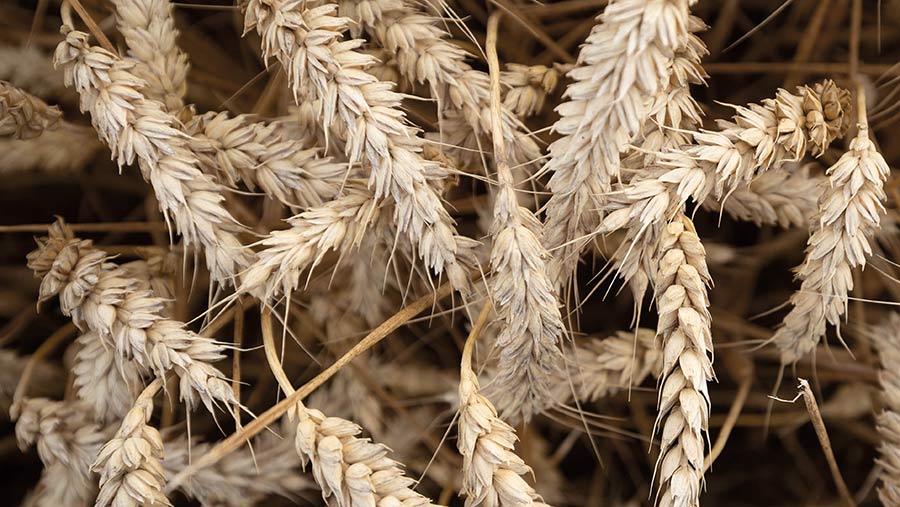Erratic wheat markets extend gap between new and old crop
 © Tim Scrivener
© Tim Scrivener Tensions arising from the attempted coup in Russia led to some bullish gains for wheat markets earlier in the week, although these have since been wiped out.
The UK continues to track wider global markets, with both Chicago and Paris futures tracking back.
Volatile times for wheat markets caused UK wheat futures to fluctuate between £198/t and £212/t for the November contract over the past week.
See also: Weather concerns push UK wheat futures above £200/t
November UK feed wheat futures opened at £201.95/t on 28 June, putting the new season crop more than £20/t above the present July contract.
But rainfall in the US corn belt has helped to reduce the total area affected by drought, and this has weighed on global markets.
The US Department of Agriculture reported that rain moved into the fringes of the corn belt, delivering much-needed moisture in some regions. However, a core mid-western drought area received little or no rain.
The Black Sea grain export deal will continue to influence global grain markets in the next few weeks, as the 18 July renewal deadline nears.
Speculation is rife within the trade that Russia will not renew the agreement beyond the deadline.
The United Nations Joint Co-ordination Centre (JCC) has already noted a drop in export volumes through the corridor.
Fertiliser
While arable markets remain volatile, falling input costs, notably fertiliser, may offer relief to farmers.
Some farm businesses have tried to lock in current fertiliser prices in an attempt to limit further volatility, but traders have warned that supplies remain tight.
GB fertiliser prices have continued to fall, with UK ammonium nitrate averaging £390/t in May, down from £716/t during the same month last year.
The latest AHDB figures for granular urea averaged £396/t, while muriate of potash averaged £546/t.
Lower gas prices have helped keep fertiliser prices down, although there has been some recent uplift.
UK natural gas futures opened at 86.7p/therm on 28 June for the July contract, up by more than 20p/therm on the previous month, but this is still less than half of where prices were at the start of the year.
Grain and input trader ADM said that during the past week the European nitrogen markets had been focusing on the impact of the reimposition of the 6.5% tariff on urea imported into the EU from other origin destinations, and a 5.5% tariff on ammonia imports.
